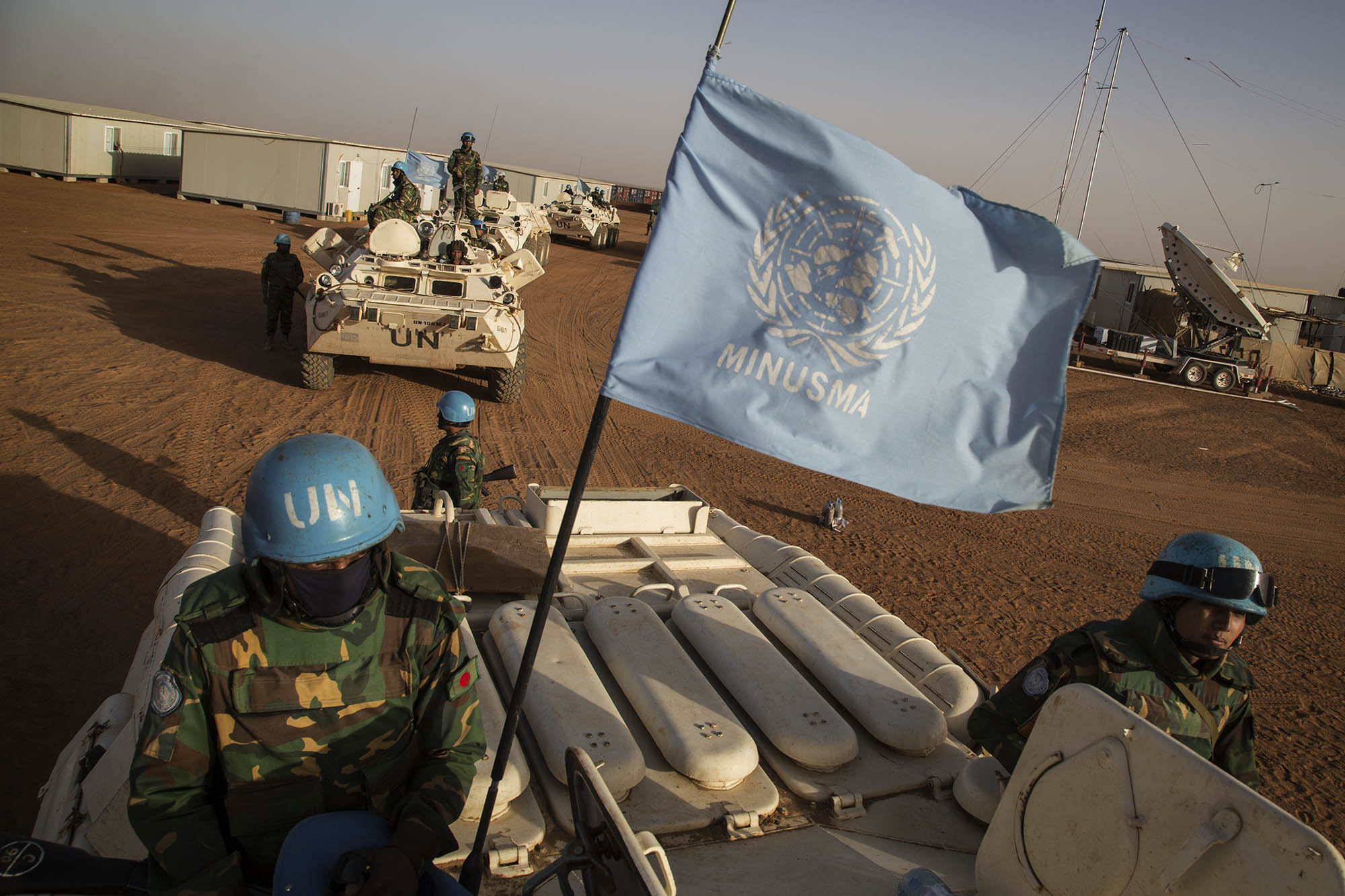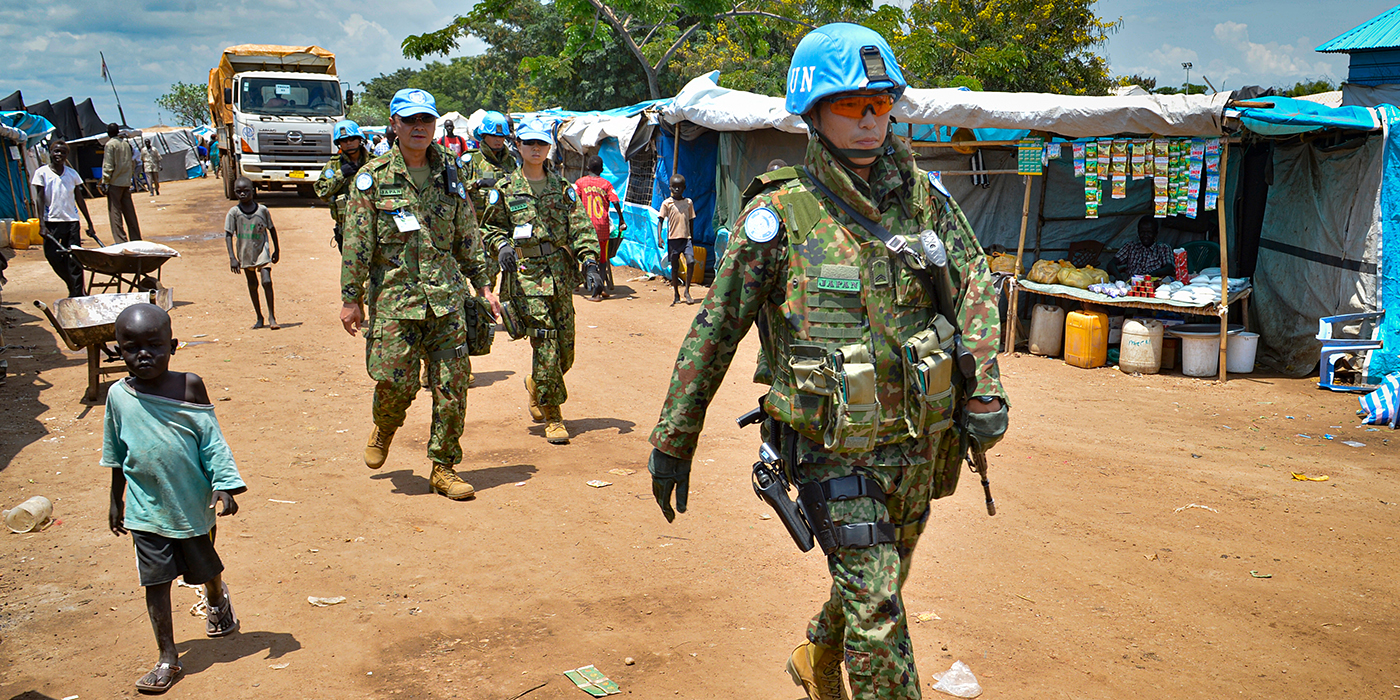Deployment Locations: Un Troops Deployed

The United Nations (UN) has deployed peacekeeping troops to various countries worldwide to maintain international peace and security. The reasons for deployment vary depending on the specific situation in each country.
Deployment Countries
The following is a list of countries where UN troops have been deployed:
- Cyprus: To prevent conflict between Greek and Turkish Cypriots.
- Lebanon: To monitor the withdrawal of Israeli troops and assist the Lebanese government in maintaining security.
- Somalia: To support the African Union Mission in Somalia (AMISOM) in its efforts to stabilize the country.
- South Sudan: To protect civilians and support the implementation of the peace agreement.
- Mali: To support the Malian government in its efforts to combat terrorism and restore stability.
- Central African Republic: To protect civilians and support the government in its efforts to restore peace and stability.
- Democratic Republic of the Congo: To protect civilians and support the government in its efforts to stabilize the country.
Mandate and Objectives
Un troops deployed – UN peacekeeping missions are authorized by the UN Security Council to help countries torn apart by conflict create conditions for lasting peace. Their mandates are tailored to the specific needs of each country, but they typically include tasks such as monitoring ceasefires, protecting civilians, supporting peace processes, and assisting in the delivery of humanitarian aid.
UN peacekeeping missions have evolved over time to meet the changing needs of the world. In the early days, they were primarily focused on observing ceasefires and preventing violence. However, as conflicts became more complex, so too did the mandates of UN peacekeeping missions. Today, they are often called upon to carry out a wide range of tasks, including protecting civilians from violence, supporting peace processes, and assisting in the delivery of humanitarian aid.
Mandate
The mandate of a UN peacekeeping mission is determined by the UN Security Council. The Council sets out the mission’s objectives, tasks, and duration. The mandate may also include specific conditions that must be met before the mission can be deployed or withdrawn.
Objectives
The objectives of UN peacekeeping missions are to help countries torn apart by conflict create conditions for lasting peace. These objectives may include:
- Monitoring ceasefires
- Protecting civilians
- Supporting peace processes
- Assisting in the delivery of humanitarian aid
Troop Contributions

The United Nations peacekeeping missions rely heavily on troop contributions from member states. These contributions vary significantly, with some countries providing substantial numbers of troops while others contribute only a handful.
The top 10 countries contributing troops to UN peacekeeping missions as of June 2023 are:
| Rank | Country | Number of Troops |
|---|---|---|
| 1 | Bangladesh | 6,821 |
| 2 | Ethiopia | 6,545 |
| 3 | India | 5,988 |
| 4 | Rwanda | 4,835 |
| 5 | Senegal | 3,749 |
| 6 | Pakistan | 3,636 |
| 7 | Burkina Faso | 3,479 |
| 8 | Nepal | 3,245 |
| 9 | Egypt | 3,097 |
| 10 | Ghana | 2,934 |
Several factors influence troop contributions, including:
- Political will: Some countries are more committed to peacekeeping than others and are willing to provide troops even when it is not in their direct national interest.
- Military capacity: Countries with large and well-trained militaries are more likely to be able to contribute troops to peacekeeping missions.
- Financial resources: Peacekeeping missions can be expensive, and countries must be able to afford to support their troops in the field.
- Domestic stability: Countries with internal conflicts or other security challenges may be less likely to be able to spare troops for peacekeeping missions.
Challenges and Successes
UN peacekeeping missions face numerous challenges, including complex political environments, resource constraints, and threats to peacekeepers’ safety. Despite these challenges, UN peacekeeping missions have achieved significant successes in promoting peace and stability worldwide.
Challenges
- Complex political environments: Peacekeeping missions often operate in politically complex environments where multiple parties with conflicting interests are involved. This can make it difficult to negotiate and implement peace agreements.
- Resource constraints: Peacekeeping missions are often underfunded and understaffed, which can limit their ability to effectively carry out their mandates.
- Threats to peacekeepers’ safety: Peacekeepers often operate in dangerous environments where they are at risk of attack from armed groups or other threats.
Successes, Un troops deployed
Despite the challenges, UN peacekeeping missions have achieved significant successes in promoting peace and stability worldwide. Some examples of successful UN peacekeeping missions include:
- The United Nations Mission in Liberia (UNMIL): UNMIL was established in 2003 to help Liberia recover from a civil war. The mission was successful in helping to stabilize the country and support the transition to a democratic government.
- The United Nations Stabilization Mission in Haiti (MINUSTAH): MINUSTAH was established in 2004 to help Haiti recover from a period of political instability and violence. The mission was successful in helping to stabilize the country and support the transition to a democratic government.
- The United Nations Mission in South Sudan (UNMISS): UNMISS was established in 2011 to help South Sudan recover from a civil war. The mission is ongoing, but it has already made significant progress in helping to stabilize the country and support the transition to a democratic government.
Future of UN Peacekeeping
The future of UN peacekeeping operations is uncertain. The world is facing a number of new and emerging challenges, and it is unclear how the UN will be able to adapt to these challenges.
One of the biggest challenges facing UN peacekeeping is the increasing complexity of conflicts. In the past, peacekeeping operations were often deployed to monitor ceasefires or to help implement peace agreements. However, today’s conflicts are often more complex and involve a wider range of actors, including non-state armed groups and terrorist organizations. This makes it more difficult for UN peacekeepers to maintain impartiality and to protect civilians.
Another challenge facing UN peacekeeping is the increasing number of conflicts that are taking place in urban areas. Urban peacekeeping is more complex and dangerous than peacekeeping in rural areas, and it requires specialized training and equipment. The UN is currently working to develop new strategies for urban peacekeeping, but it is unclear how effective these strategies will be.
Emerging Trends in Peacekeeping
Despite the challenges, there are also a number of emerging trends in peacekeeping that could help to improve the effectiveness of UN operations. These trends include:
- The use of new technologies, such as drones and satellite imagery, to improve situational awareness and to monitor ceasefires.
- The development of new strategies for urban peacekeeping, including the use of community policing and the establishment of safe zones.
- The increasing participation of women in peacekeeping operations. Women peacekeepers can often play a unique role in building trust and rapport with local communities.
Challenges in Peacekeeping
Despite these emerging trends, there are also a number of challenges that the UN will need to overcome in order to improve the effectiveness of its peacekeeping operations. These challenges include:
- The lack of political will on the part of some member states to provide the resources and support that UN peacekeeping operations need.
- The difficulty of maintaining impartiality in complex conflicts.
- The risk of peacekeepers being targeted by violence.
Case Studies

The United Nations has deployed peacekeeping missions to various conflict zones around the world. Each mission has its unique set of challenges and successes. Here are two case studies that highlight the complexities and outcomes of UN peacekeeping operations:
United Nations Mission in South Sudan (UNMISS)
The UNMISS was established in 2011 to support the implementation of the Comprehensive Peace Agreement that ended the Second Sudanese Civil War. The mission’s mandate includes protecting civilians, supporting the government in building peace and stability, and facilitating humanitarian assistance.
Successes:
- Reduced violence and protected civilians in conflict-affected areas.
- Facilitated the delivery of humanitarian aid to millions of people.
- Supported the government in implementing the peace agreement and building institutions.
Challenges:
- Ongoing conflict and violence, particularly in remote areas.
- Limited resources and capacity to effectively protect civilians in all areas.
- Political and logistical challenges in implementing the peace agreement.
United Nations Mission in the Democratic Republic of the Congo (MONUSCO)
The MONUSCO was established in 1999 to support the peace process in the Democratic Republic of the Congo (DRC). The mission’s mandate includes protecting civilians, supporting the government in stabilizing the country, and facilitating the disarmament and reintegration of armed groups.
Successes:
- Contributed to the reduction of violence and the improvement of security in some areas.
- Facilitated the signing of peace agreements and the establishment of a transitional government.
- Supported the government in implementing reforms and building capacity.
Challenges:
- Ongoing conflict and violence in eastern DRC.
- Limited resources and capacity to effectively protect civilians in all areas.
- Political and logistical challenges in implementing the peace agreements.